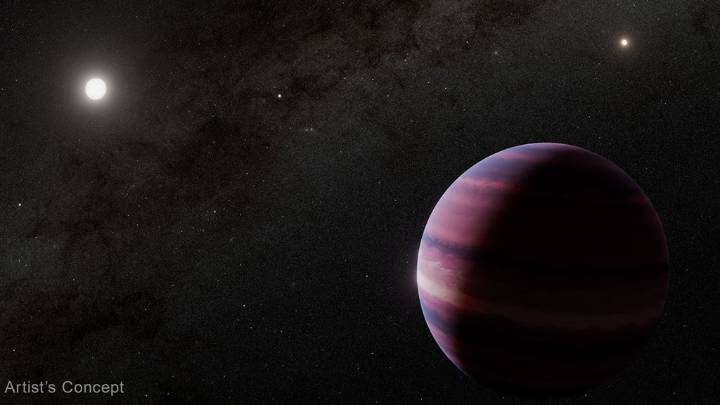Astronomers have found the strongest evidence yet of a giant planet in the "habitable zone" orbiting a star in the nearest solar system to our own Sun. The discovery was made using NASA's James Webb Space Telescope, which detected a likely gas giant around Alpha Centauri A - one of three stars in the Alpha Centauri system, just over four light-years from Earth. Alpha Centauri is made up of two Sun-like stars, Alpha Centauri A and B, and a faint red dwarf, Proxima Centauri. While three planets have already been confirmed around Proxima Centauri, confirming worlds around the brighter Sun-like stars has proved far more challenging. The new observations, made with Webb's Mid-Infrared Instrument (MIRI), have been detailed in two papers accepted for publication in The Astrophysical Journal Letters. If confirmed, the planet - thought to be roughly the mass of Saturn - would be the closest known world orbiting within the habitable zone of a Sun-like star. However, scientists say that as a gas giant, it is unlikely to host life as we know it. "This system is so close to us that any planets found here would offer our best opportunity to study worlds beyond the Solar System in unprecedented detail," said Dr Charles Beichman of NASA's Jet Propulsion Laboratory and Caltech's NASA Exoplanet Science Institute, a co-lead author on the research. "These are incredibly difficult observations to make, even with the most powerful space telescope ever built, because the stars are bright, close together and move rapidly across the sky." The first detection came in August 2024, when Webb used a coronagraphic mask to block the glare from Alpha Centauri A. After subtracting the light from both Alpha Centauri A and its companion star, astronomers identified a faint object more than 10,000 times dimmer than its host star and orbiting at about twice the Earth-Sun distance. Subsequent observations in February and April 2025 failed to reveal the object. Researchers believe this may be because the planet's orbit brought it too close to its star during those later viewings, making it invisible to Webb at the time. Computer simulations suggest the object could follow an elliptical path, varying between one and two times the Earth-Sun distance, and remain gravitationally stable despite the nearby presence of Alpha Centauri B.
Astronomers Find Giant Gas Planet In Nearest Star's 'Habitable Zone'
 Cover Media6 hrs ago
Cover Media6 hrs ago
64


 ABC News
ABC News New York Post
New York Post CBS News
CBS News FOX 13 Tampa Bay Crime
FOX 13 Tampa Bay Crime CNN Health
CNN Health People Human Interest
People Human Interest The Georgia Sun
The Georgia Sun CBN Christian World News
CBN Christian World News